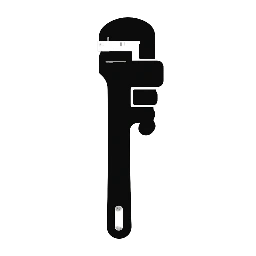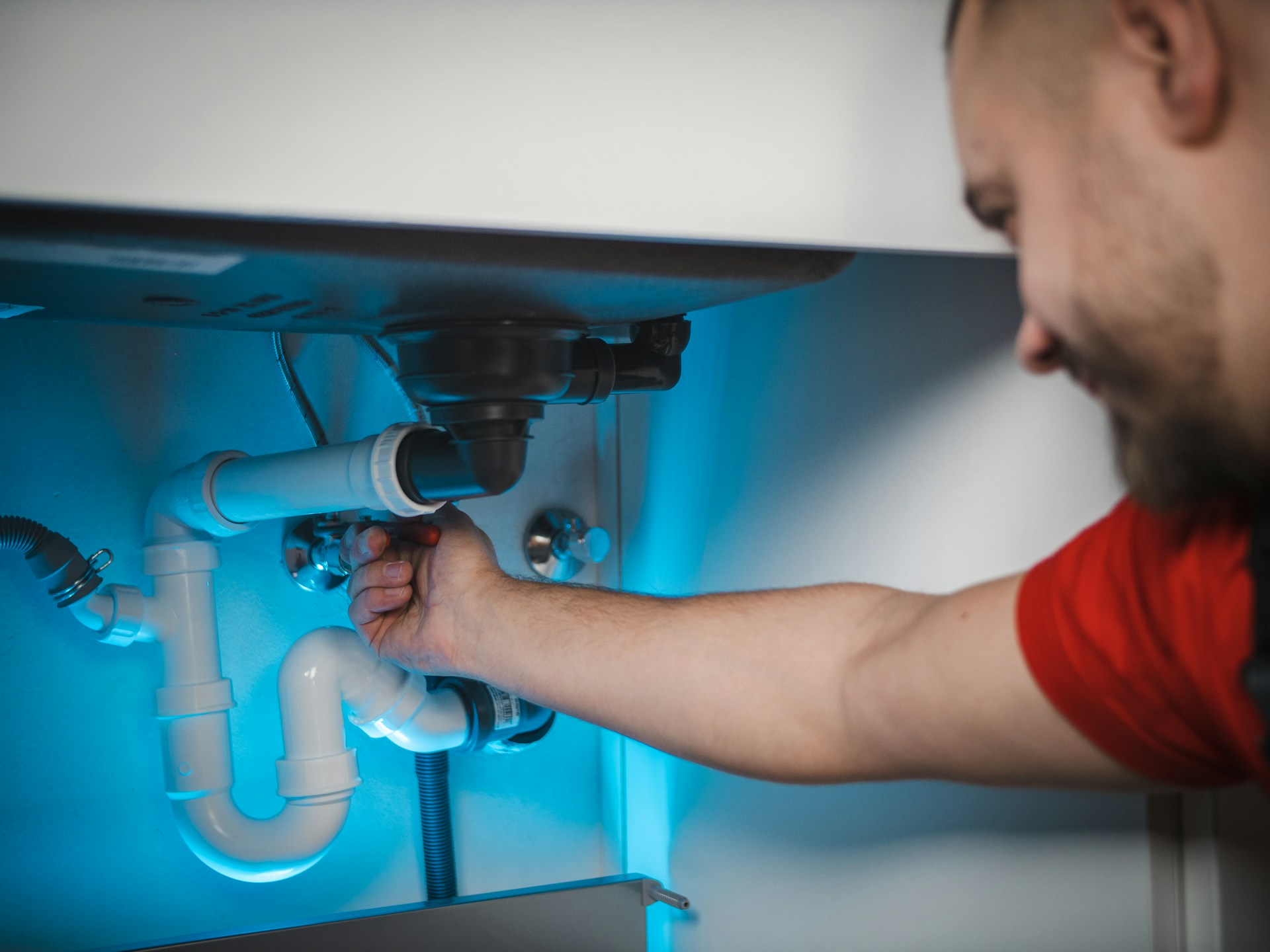Low water pressure in a commercial building can disrupt operations, impact hygiene, and even pose safety concerns. From a trickle in the restrooms to inefficient industrial processes, the effects are far-reaching. Identifying the root cause is crucial for effective troubleshooting and lasting solutions.
Understanding Your Building’s Water System
Before diving into potential problems, it’s helpful to have a basic understanding of how water enters and is distributed within your commercial building:
- Main Water Line: Water typically enters the building from a municipal supply line or a private well.
- Water Meter: Measures water consumption.
- Main Shut-Off Valve: Controls the flow of water into the entire building.
- Pressure Reducing Valve (PRV): If present, regulates the incoming water pressure to a safe and usable level for the building’s plumbing system.
- Distribution Pipes: A network of pipes carries water to various fixtures and equipment throughout the building.
- Water Heaters/Boilers: For hot water supply.
- Pumps (Booster Pumps): May be installed to increase water pressure, especially in multi-story buildings or those with high demand.
- Fixtures: Faucets, toilets, showers, industrial equipment, etc.
Common Causes of Low Water Pressure
Here are the most frequent reasons for inadequate water pressure in commercial settings:
1. Municipal Supply Issues
- Reduced City Water Pressure: The most straightforward cause. Your municipal water provider might be experiencing issues, performing maintenance, or there could be a temporary drop in pressure due to high demand in the area.
- How to Check: Contact your water utility company. They can inform you about any ongoing work or general pressure issues in your vicinity. You can also check the water pressure at an outdoor spigot before it enters the building (if accessible and there’s no PRV before it).
- Solution: If it’s a municipal issue, you’ll likely have to wait for them to resolve it. In some cases, if persistent, you might consider a booster pump for your building (though this usually requires careful consultation with the utility).
2. Main Shut-Off Valve Not Fully Open
- If the main shut-off valve for the building is not completely open, it will restrict the flow of water and reduce pressure throughout the entire system.
- How to Check: Locate the main shut-off valve, typically near the water meter where the main water line enters the building. Ensure it’s fully open (turned counter-clockwise until it stops).
- Solution: Open the valve completely.
3. Faulty or Maladjusted Pressure Reducing Valve (PRV)
- A PRV is designed to lower and stabilize high incoming water pressure to prevent damage to your internal plumbing. However, if it malfunctions or is set too low, it can significantly reduce your building’s water pressure.
- How to Check: PRVs have an adjustable screw or cap. You can try adjusting it (usually clockwise to increase pressure), but it’s often best to consult a plumber. A failing PRV might also show signs like fluctuating pressure or sudden drops.
- Solution: Adjust the PRV to the appropriate pressure setting (typically between 50-70 psi for commercial buildings, but check local codes and equipment specifications). If adjustment doesn’t work or it’s visibly damaged, the PRV will need to be repaired or replaced by a qualified plumber.
4. Leaks in the Water Supply Line
- Even small leaks in the main water line leading into or within the building can cause a noticeable drop in pressure, as water escapes before reaching fixtures.
- How to Check: Look for unexplained wet spots on the ground outside or damp areas inside, particularly near walls or foundations where pipes are routed. Listen for the sound of running water when no fixtures are in use. A sudden increase in your water bill without a corresponding increase in usage is a strong indicator.
- Solution: Leaks require immediate attention from a plumber. They can use various techniques (acoustic leak detection, thermal imaging, pressure testing) to locate and repair the leak.
5. Clogged Pipes (Corrosion/Sediment Buildup)
- Over time, mineral deposits (scale), rust, and sediment can accumulate inside pipes, especially in older buildings with galvanized steel pipes. This buildup reduces the effective diameter of the pipes, restricting water flow and lowering pressure.
- How to Check: This is a common cause of localized low pressure (e.g., only one part of the building or a few fixtures are affected, while others are fine). If low pressure is widespread in an older building, it’s a strong suspect.
- Solution: Depending on the severity and type of pipe, solutions can range from hydro-jetting (for drain lines, though less common for supply lines unless severe blockages) to pipe descaling. In severe cases, repiping (replacing old, corroded pipes) may be necessary, which is a significant undertaking.
6. Issues with Individual Fixtures or Appliances
- Sometimes, the problem isn’t the main water supply but specific fixtures or equipment.
- Aerator Clogs: Faucet aerators can become clogged with sediment or debris, reducing flow.
- How to Check: Unscrew the aerator from the faucet and clean any debris.
- Solution: Clean or replace the aerator.
- Clogged Cartridges/Valves: Internal components of faucets, showerheads, or toilets can become obstructed.
- How to Check: Test other fixtures nearby. If only one fixture has low pressure, this is a likely cause.
- Solution: Disassemble and clean/replace the affected cartridge or valve.
- Water Filters: Clogged whole-building or point-of-use water filters can restrict flow.
- How to Check: Check the filter’s last replacement date and inspect it for visible clogging.
- Solution: Replace the filter cartridge.
- Malfunctioning Appliances: Dishwashers, ice makers, or industrial equipment with integrated water lines can have issues within their own supply lines or internal mechanisms.
- How to Check: Isolate the appliance to see if overall building pressure improves. Consult the appliance’s manual.
- Solution: Repair or replace the faulty appliance component.
- Aerator Clogs: Faucet aerators can become clogged with sediment or debris, reducing flow.
7. Insufficient Pipe Size for Demand
- If the original plumbing system was not designed to handle the current water demand of the building (e.g., after an expansion, addition of new restrooms, or installation of high-demand equipment), the pipes may simply be too small to deliver adequate pressure to all points simultaneously.
- How to Check: This is often a systemic issue, where pressure drops significantly when multiple fixtures are in use. An experienced plumber or engineer can perform calculations to determine if pipe sizing is appropriate.
- Solution: This typically requires significant re-plumbing and potentially increasing the size of main supply lines, which is a major project.
8. Malfunctioning Booster Pump (If Present)
- Commercial buildings, especially multi-story ones, often utilize booster pumps to maintain consistent water pressure throughout the building. If this pump malfunctions, loses power, or its settings are incorrect, it can lead to a drastic drop in pressure.
- How to Check: Check the pump’s power supply, circuit breaker, and any control panels. Listen for unusual noises or lack of operation when water is being used.
- Solution: Troubleshoot the pump’s power and settings. If it’s old or frequently malfunctioning, it may need repair or replacement by a pump specialist.
9. Air in the Water Lines
- While less common as a primary cause of sustained low pressure, air pockets can temporarily disrupt flow and cause sputtering or intermittent pressure drops. This often occurs after plumbing repairs or if the water supply has been temporarily shut off.
- How to Check: Sputtering faucets, air coming out with water.
- Solution: Open all faucets (starting from the lowest point in the building) and let them run until the water flows smoothly and consistently, expelling any trapped air.
Steps for Diagnosing Low Water Pressure
When troubleshooting, follow a systematic approach:
- Is it Widespread or Localized?
- Widespread (affecting the entire building): Points to issues with the main supply, PRV, main shut-off valve, large leaks, or municipal supply.
- Localized (affecting only certain areas or fixtures): Points to clogged pipes in specific sections, individual fixture issues, or localized leaks.
- Check the Main Shut-Off Valve: Ensure it’s fully open.
- Contact Your Water Utility: Rule out municipal supply problems.
- Inspect the PRV: If present, check its setting and condition. Consider professional adjustment or replacement.
- Check for Visible Leaks: Look for any signs of water damage, wet spots, or listen for running water.
- Test Fixtures Systematically:
- Start by checking outdoor spigots first (if applicable and before the PRV) to get an idea of the incoming pressure.
- Then, test fixtures on the lowest floor, then higher floors.
- Check both hot and cold water pressure to determine if the issue is specific to the hot water system (e.g., water heater problem).
- Consider Age of Plumbing: Older buildings with galvanized pipes are more prone to internal corrosion and blockages.
- Evaluate Booster Pump (if applicable): Check its operation and power.
When to Call a Professional Plumber
While some minor issues can be addressed in-house (like cleaning aerators or checking the main valve), most commercial low water pressure problems require the expertise of a licensed commercial plumber. They have the tools and knowledge to:
- Accurately measure water pressure and flow rates.
- Diagnose complex PRV issues.
- Detect hidden leaks.
- Perform pipe inspections (e.g., with video cameras).
- Assess pipe sizing and system capacity.
- Repair or replace main supply lines and booster pumps.
- Address extensive pipe corrosion or blockages.
Investing in a professional diagnosis can save time, prevent further damage, and ensure a lasting solution to your building’s water pressure woes.


Leave a Reply